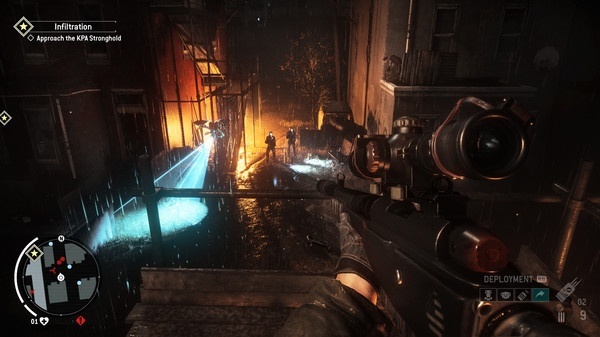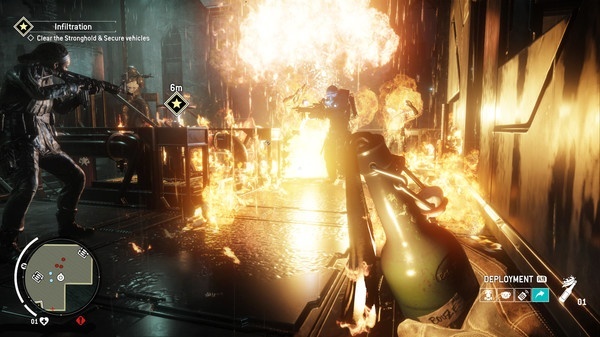Homefront: The Revolution (Xbox One) Review
By Aria DiMezzo  31.12.2016
31.12.2016

Homefront: The Revolution, a reboot of the original Homefront game (which itself is only five years old), has a rough history, thanks in large part to now-defunct THQ's bankruptcy, and was purchased partway through development by Crytek. Financial issues at Crytek created more problems, causing it to sell the IP to a parent company of Deep Silver (of Ride to Hell: Retribution fame), and somehow someone managed to put together a technically complete game. Given the circumstances, mediocrity is more than anyone dared hope, so Cubed3 enters the alternate universe to fight the revolution.
Homefront: The Revolution is late for the party, and arrived underdressed. It is bad in a systemic way, with hard freezes that lock the game for two seconds each time that it auto-saves, and when it's not frustrating with technical shortcomings, it's asking players to retread ground that has been covered hundreds of times. It's hard to piece together what the grand vision for the game might have been, but the developmental disarray reflects into the product, resulting in a game with all the luxury of a jailhouse blanket.
Aside from the awkwardly stilted CGs and bizarre mannerisms of NPCs (seemingly due to a manager suggesting, "Make them look realistic," while someone heard it as, "Make them move constantly"), atmosphere is the one thing that is really strong here. The setting will cause more than a few eye-rolling groans, mostly because "North Korea" is obviously supposed to be China, but Deep Silver didn't want to ruffle anyone's feathers. The plot deals with the conquest of the United States by the relatively small nation on that Asian peninsula, and no amount of wilfully suspending disbelief can overcome that laughable concept. Substitute "China" instead of "North Korea," and it becomes a lot easier to enjoy.

One criticism levelled against Final Fantasy is that it translates into a series of mostly-meaningless quests that pretend to be a string of breadcrumbs leading to a larger plot, but this criticism is far more appropriate for the travesty on offer here. It's Batman: Arkham City with guns and a first-person view, except its story is stretched far past the point of incredulity (yes, compared to a billionaire wearing tights to fight evil), and it isn't fun.
This isn't to say that the entire experience is bad, though. The action is competent, as far as shooters go, and there are moments when Homefront: The Revolution is rather playable. There are even a few where it becomes enjoyable, but it never stops being obvious that this product was only finished and released so that the previous work didn't go to waste. Repetitive gameplay is interrupted by occasionally good dialogue segments that aim at the lofty goal of pondering the difference between a terrorist and a freedom fighter, but it's not worth digging through the droll quests and uninspired combat systems to get to.

Cubed3 Rating
Subpar
Deep Silver didn't need any more bad games under its belt, but if there is nothing else that can be said, it can be stated definitively that this is not as bad as Ride to Hell: Retribution. Some would call this a victory, and it's a noble effort to not throw away work that was already underway, yet that's part of the core problem. Homefront: The Revolution wasn't finished and released because gamers needed something great to play; it was completed and sold because some manager out there refused to let the work go to waste.

![]() 4/10
4/10
![]() 0
(0 Votes)
0
(0 Votes)
 Out now
Out now  Out now
Out now  None
None  Out now
Out now Comments
Comments are currently disabled

 Sign In
Sign In Game Details
Game Details Subscribe to this topic
Subscribe to this topic Features
Features







 Top
Top

